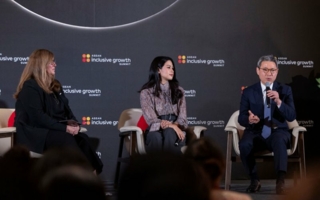04/03/2024 – FESPA Global Print Expo 2024
Interview with Michael Ryan
With the FESPA Global Print Expo 2024 just around the corner, scheduled to take place from March 19th to 22nd, 2024, at the RAI Amsterdam Convention Centre in the Netherlands; textile network interviewed Michal Ryan, Head of FESPA Global Print Expo and Sportswear Pro, to provide an overall assessment of expectations, the industry, and future developements.
textile network: What are your expectations for 2024?
Mike Ryan: I’m excited about what 2024 has in store for the industries that FESPA represents and, as with previous years, I expect the year ahead to be shaped by key trends and changing consumer behaviours. For example, in line with demand for more sustainable products and manufacturing, I anticipate that the expectation for printers and brands to be more eco-conscious will be stronger than ever before. As a result, new functionalities that enable technologies and solutions to be more environmental will be a driver behind innovation. Consequently, I expect to see more print businesses automating production to speed up and simplify end-to-end processes, meet market demand quicker, minimise human intervention and reduce waste. Developments in software tools are also supporting greater print run flexibility, enabling printers to take advantage of the personalisation opportunity to expand their offering with tailored products. At our upcoming Personalisation Experience exhibition and conference in March 2024, we’ll be highlighting the tools enabling this shift and offering guidance to support printers on their customisation journey. Thinking about the year ahead, the strapline for our FESPA Global Print Expo – ‘Opportunities, Revealed’ – sums it up. Whether you’re looking to delve into new markets and technologies, level up your business strategy, or experiment with new applications, I believe that 2024 will be an important year for businesses setting their long-term direction and investing for future growth.
textile network: Which innovations and technologies do you think will shape the future?
Mike Ryan: There are so many new printing and finishing innovations planned by suppliers involved in all steps of the printing process – many of which are due to launch at the upcoming FESPA Global Print Expo and its co-located events, where we have 75 product launches. In terms of technologies that will shape the future, a few prominent ones come to mind. If we first focus on product decoration and printing, the process that’s firmly in the spotlight is direct-to-film (DTF printing). A very simple, durable and affordable process, it’s enabling textile producers to create vibrant and detailed designs on a range of products. For print technology more broadly, I see potential across both screen and digital printing to continue driving positive developments for businesses, and I’ve been intrigued to see the innovative technologies that have come to the market in the past year. I personally believe the biggest thing shaping the future for printers and textile producers is automation software and the progress of AI, which stands to play a huge role in driving the adoption of smart wearables, accelerating the adoption of customisation, and enabling dramatic production efficiencies. We’re probing these topics at our upcoming Personalisation Experience and Sportswear Pro conferences, as well as in the exhibition spaces.
textile network: How do you assess the current industry situation and future developments?
Mike Ryan: The textile market continues to face similar challenges to other industries, such as inflationary rises, supply chain disruptions, unstable geopolitical conditions and the increased pressure for more sustainable production. As a result, brands and manufacturers are reviewing their supply chain operations, exploring how they can better manage risk while finding new efficiencies. For example, in recent years, there has been a rise in near-shoring and I expect that to continue as brands bring manufacturing closer to home in order to react quickly to fast-moving consumer preferences. There are also some great new growth opportunities arising in the industry. For example, textile producers can capitalise on the ‘manufacturing of one’ trend, producing one-of-a-kind products that meet customers’ exact tastes. This demand-led approach also reduces inventory costs and significantly reduces waste.
textile network: Thank you very much for taking the time for us!




